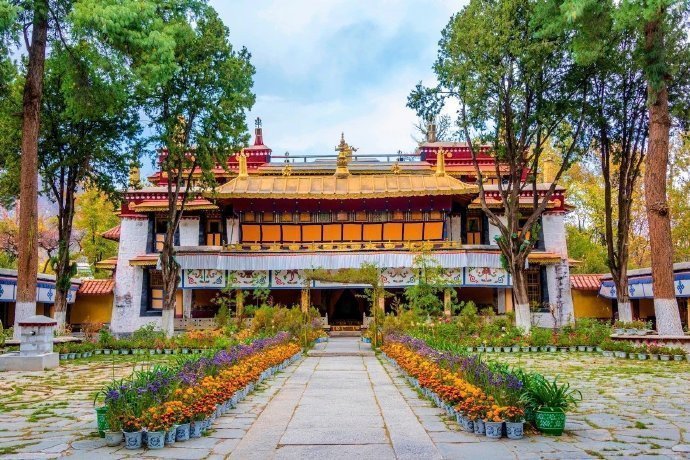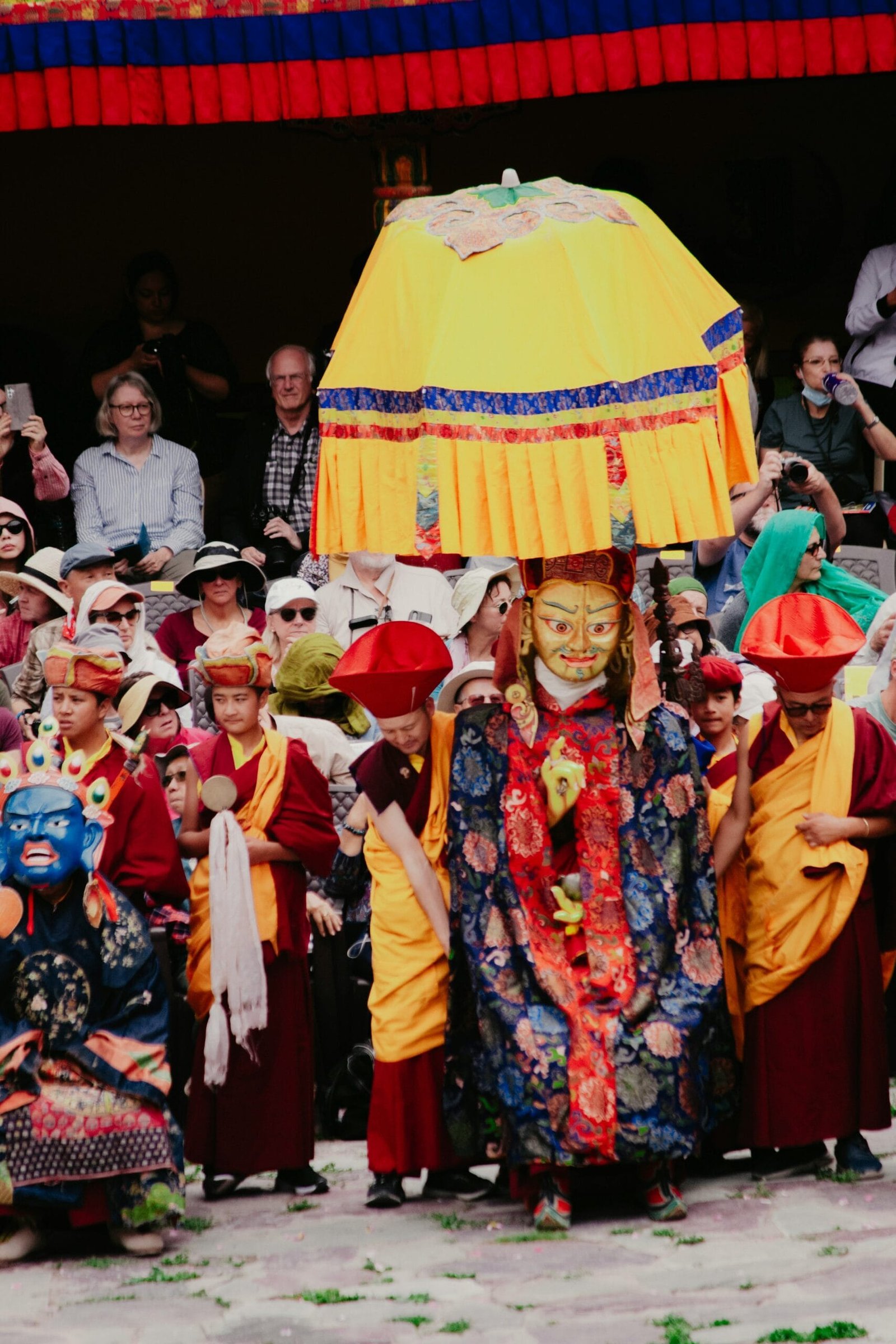Background of the Debate
The late 8th century marked a significant period in the development of Tibetan Buddhism, as political and spiritual transformations shaped the religious landscape of Tibet. During this era, Tibetan society experienced a remarkable confluence of influences, particularly with the arrival of Indian Buddhism, which was gaining momentum in the region, and the introduction of Chinese Chan Buddhism. This multifaceted environment set the stage for the pivotal debate between two renowned figures, Kamalasila and Moheyan, whose contrasting philosophies would profoundly affect Tibetan religious practice and thought.
Kamalasila, an Indian Buddhist scholar, championed the gradual approach to enlightenment, emphasizing the importance of meditation, ethical conduct, and the study of scriptures. His teachings were significantly aligned with the Mahayana tradition and were influential in the formal establishment of Buddhism in Tibet. His arrival in the Tibetan royal court symbolized a commitment to integrating Indian Buddhist methods as the foundation for Tibetan spiritual development. On the contrary, Moheyan represented the Chan tradition from China, which advocated for an immediate and direct experience of enlightenment, often dismissing scholarly study and ritual as distractions from realizing one’s true nature.
This philosophical divide was not merely academic; it resonated deeply with the political dynamics of the time. The Tibetan Empire sought to assert independence in the face of external influences from China, while simultaneously engaging with various interpretations of Buddhism. As such, the debate between Kamalasila and Moheyan not only underscored differing ideologies but also highlighted the critical issue of cultural identity in the context of a rapidly changing spiritual environment. Ultimately, the resolution of this debate would guide the trajectory of Tibetan Buddhism, impacting its practice and interpretation in the centuries to follow.
Outcome of the Debate and its Immediate Effects
The debate between Kamalasila and Moheyan, which took place around 792 CE, culminated in a decisive victory for Kamalasila. This outcome had profound implications for the development of Tibetan Buddhism, particularly in the integration of Indian Buddhist principles into Tibetan practices. Kamalasila advocated for a systematic approach to enlightenment, emphasizing the importance of the gradual path, which was rooted in foundational Indian Buddhist teachings. This emphasis not only reshaped Tibetan thought but also fostered a more structured understanding of the spiritual journey.
One of the central teachings that emerged from Kamalasila’s victory was the concept of the gradual path to enlightenment, which contrasts with the instantaneous enlightenment proposed by Moheyan’s teachings. This gradual approach allowed practitioners to develop a comprehensive understanding of the stages of enlightenment, thereby navigating their spiritual practice with a clear framework. Consequently, this methodology encouraged deeper commitment and sustained effort among practitioners, which became a hallmark of Tibetan spiritual education.
Additionally, Kamalasila highlighted the significance of the six perfections: generosity, ethical conduct, patience, diligence, meditative concentration, and wisdom. These perfections were integrated into Tibetan Buddhism as essential qualities to cultivate on the path to enlightenment. Each perfection provides a guideline for ethical living and personal development, thus enriching the spiritual landscape of Tibetan practitioners.
Moreover, the accumulation of merit became a pivotal concept following Kamalasila’s victory. It emphasized the necessity of cultivating positive actions and intentions to enhance one’s spiritual capacity. This idea reinforced the interconnectedness of one’s actions and spiritual growth, establishing a robust moral framework within the Tibetan Buddhist community.
The outcomes of this debate were not just philosophical victories; they set the stage for the future of Tibetan Buddhism, shaping its practices and teachings well into the centuries that followed. In this regard, Kamalasila’s influence was transformative, profoundly impacting how practitioners engaged with the Buddhist path.
Cultural and Philosophical Impact of the Debate
The debate between Kamalasila and Moheyan in the 8th century was pivotal in establishing Tibetan Buddhism as a distinct tradition. This discourse marked a significant philosophical divergence from Chinese Buddhism, particularly Chan or Zen practices, which often emphasized sudden enlightenment. In contrast, Kamalasila advocated for a progressive and systematic approach to spiritual development, rooted deeply in Indian Buddhist philosophy. This foundational principle not only shaped Tibetan Buddhist practices but also contributed to a cultural identity unique to Tibet.
Kamalasila’s approach underscored the importance of gradual cultivation through meditation and study, which resonated with the Tibetan context. His views emphasized that a deeper understanding of Buddhist teachings required sustained effort and rigorous practice. This philosophical emphasis set the stage for the establishment of formal monastic institutions and scholarly endeavors that would characterize Tibetan Buddhism in subsequent centuries. The resulting cultural identity embraced a blend of traditional Tibetan values and Indian philosophical influences, creating a rich tapestry of spiritual thought.
The rejection of Moheyan’s assertion that enlightenment could be attained suddenly also had far-reaching implications. This rejection represented a critical distinction that would influence the nature of Buddhist practice in Tibet, contributing to the gradual decline of Zen practices within the region. The debate facilitated the consolidation of a Tibetan Buddhist identity that prioritized philosophical inquiry and the integration of various teachings, including those from Indian masters such as Atisha and Padmasambhava. This integration was essential in shaping the unique characteristics of Tibetan Buddhism, including its rich ritual practices, diverse lineages, and a strong emphasis on textual study.
Ultimately, the cultural and philosophical outcomes of the Kamalasila and Moheyan debate not only defined the trajectory of Tibetan Buddhism but also established a framework within which Tibetan Buddhists could engage with their spiritual heritage while remaining distinct from their Chinese counterparts. The ensuing traditions developed their own interpretations and practices, demonstrating the enduring impact of this crucial intellectual confrontation.
Institutional and Educational Repercussions
The debate between Kamalasila and Moheyan in the 8th century has had far-reaching effects on the institutional and educational structures of Tibetan Buddhism. Central to Kamalasila’s teachings was a strong emphasis on the importance of monastic education. He advocated for the meticulous study of scriptures and rigorous training in Buddhist philosophy, which resonated with the Indian monastic practices of the time. Kamalasila’s approach led to a re-evaluation of the existing educational paradigms within Tibetan monasteries, shifting the focus toward a more structured and scripturally based curriculum.
This transition resulted in the establishment of formal educational institutions that mirrored Indian models. Monasteries began adopting a curriculum that included a diverse range of subjects encompassing both philosophical discourse and practical meditation techniques. The emphasis on scholarly pursuits under Kamalasila’s influence fostered a culture of learning that promoted intellectual engagement among monks, leading to a heightened awareness and understanding of Buddhist teachings.
The integration of Kamalasila’s teachings into monastic practices not only altered the educational framework but also reshaped daily life in the monasteries. Monks began to allocate specific times for study, debate, and meditation, creating a balanced routine that emphasized both theoretical and practical aspects of their spiritual development. Regular debates and discussions became commonplace, enhancing the communal learning atmosphere and nurturing a more profound commitment to Buddhist ideals.
As a result, the long-term repercussions of this debate were significant, laying the foundation for the future development of Tibetan Buddhism. The systematic approach to monastic education established during this period ultimately reinforced the stature of Tibetan Buddhism as a sophisticated intellectual tradition, characterized by its deep engagement with texts and teachings. Through the lens of Kamalasila’s advocacy, it is clear that the debate played a crucial role in shaping both the institutional and educational landscapes of Tibetan Buddhist practice.






